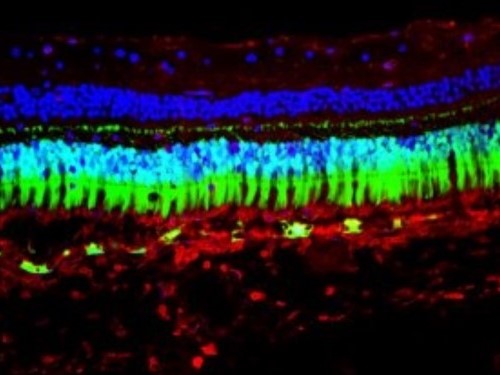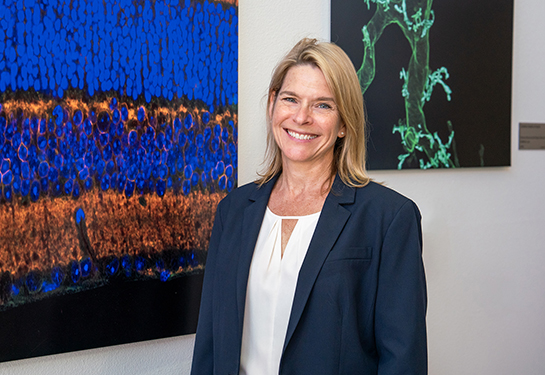UC Davis Health receives $3.6 million grant from NIH to improve eye gene therapy
Less invasive treatments for serious eye diseases could improve access to care
The UC Davis Department of Ophthalmology has received a five-year, $3.6 million grant from the National Eye Institute to explore a new way to treat vision loss using gene therapy.
The research could lead to safer and more effective treatments for people with serious eye diseases like macular degeneration and inherited blindness. It could also lead to treatments that don’t require surgery and can be done more widely in clinics.
“We’re excited to explore this new way of delivering gene therapy to the eye,” said Glenn Yiu, a retinal specialist at the UC Davis Eye Center and lead investigator for the grant. “If we can make gene delivery safer and more effective, it could open the door to treating many more patients with blinding eye diseases.”
The research team includes experts in eye surgery, drug delivery, immunology, and gene therapy from UC Davis, Caltech, University of Washington and Stevens Institute of Technology.
If we can make gene delivery safer and more effective, it could open the door to treating many more patients with blinding eye diseases.—Glenn Yiu, professor, Department of Ophthalmology and Vision Sciences
A new route to delivering gene therapy
Gene therapy is a way to treat diseases by delivering healthy genes into the body using harmless viruses to carry the gene into diseased tissues. In the eye, this is often done by injecting the virus either into the jelly-like center of the eye (the vitreous) or under the tissue lining the back of the eye (the retina).
But both methods can have drawbacks: one requires surgery. The other doesn’t reach the right cells very well and can cause inflammation.
The team is studying a third option: injecting the gene therapy into the suprachoroidal space, a tiny layer between the white of the eye and the blood vessels that feed the retina.
This method is potentially less invasive, but it still needs improvement. The researchers will study the treatment method on non-human primates like rhesus monkeys, which have eyes that are similar to humans. The work involves a collaboration between the UC Davis School of Medicine, UC Davis School of Veterinary Medicine and the California National Primate Research Center.
The team will test how to:
- Spread the treatment more effectively to the center of the retina (the macula), which is important for sharp vision.
- Target the right cells, like photoreceptors and retinal pigment cells, which are often damaged in eye diseases.
- Reduce side effects, like inflammation, by testing different medications that calm the immune system.
They’ll also try to design and engineer new versions of the virus that are specially crafted to cross barriers in the eye and reach deeper layers.
The researchers hope their findings will expand access to gene therapy to allow office-based treatments that are less invasive and more widely available to patients.
Resources
The UC Davis Eye Center
The UC Davis Eye Center provides world-class eye care, pioneers collaborative vision research, and trains the next generation of specialists and investigators to become leaders in the Sacramento region and beyond. The Eye Center team aims to transform vision care and develop cures for blinding eye diseases, from cornea to cortex.





